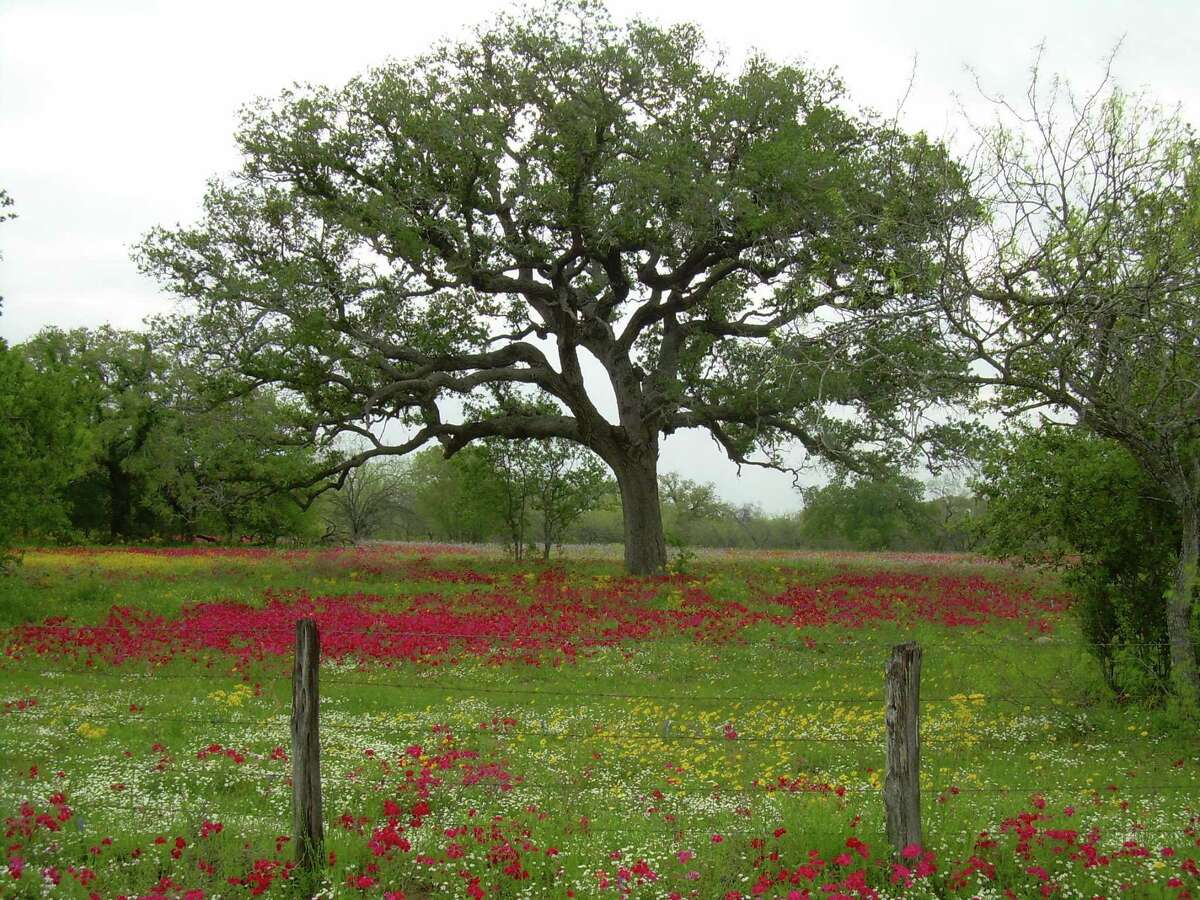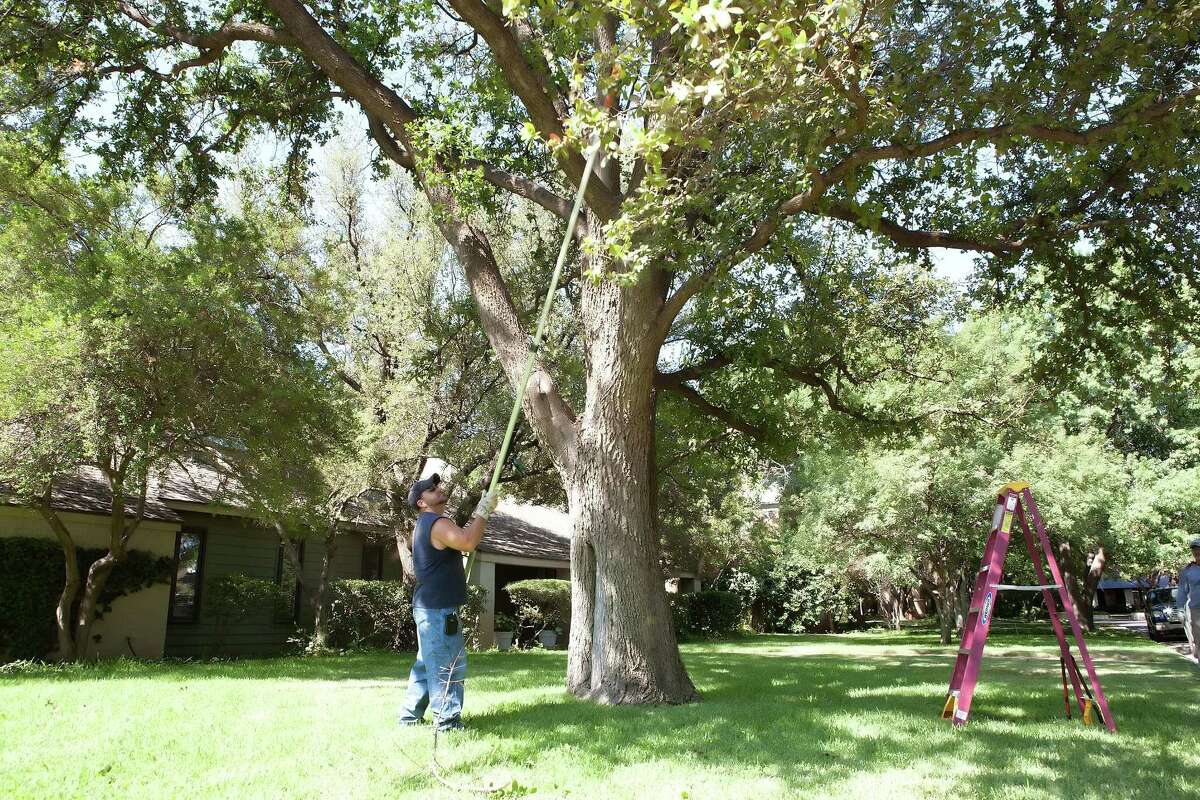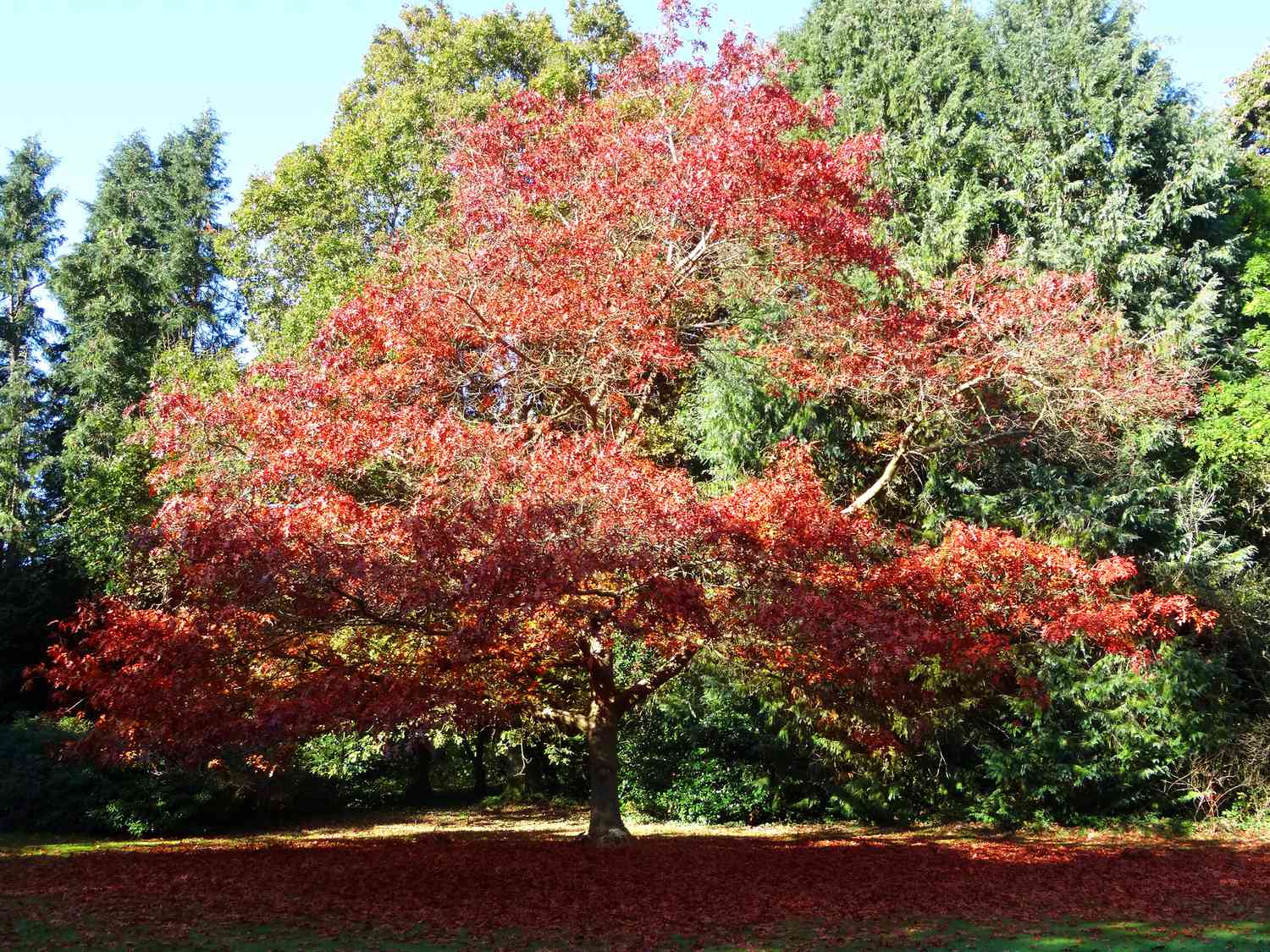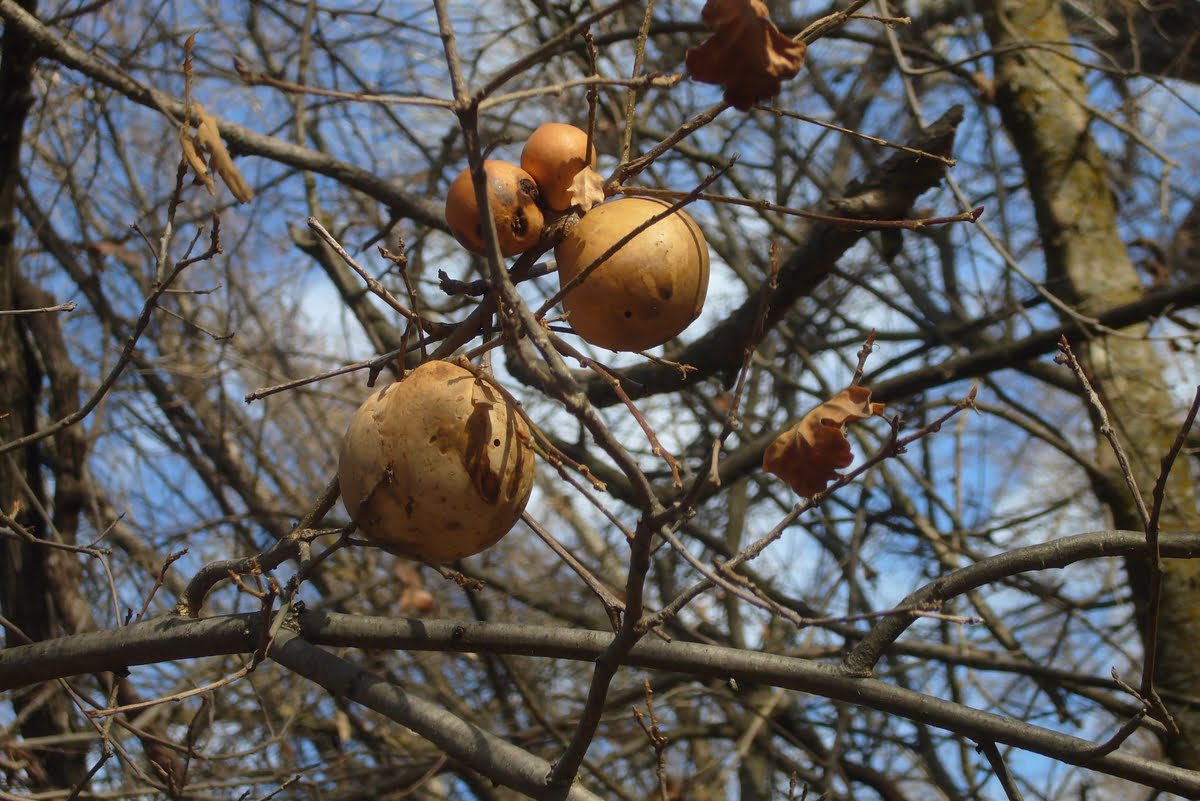Home>Gardening Techniques>Plant Care>How To Grow Oak Trees
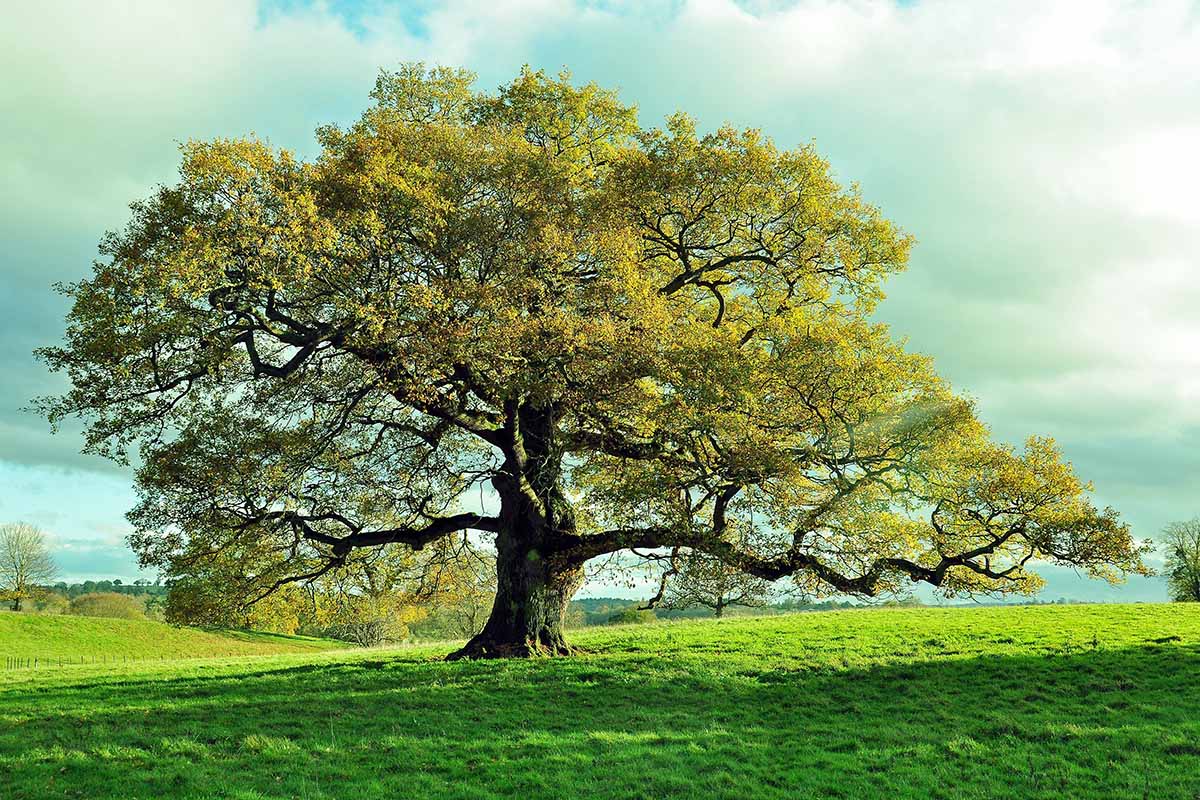

Plant Care
How To Grow Oak Trees
Modified: January 22, 2024
Learn essential plant care tips for how to grow oak trees, including watering, soil preparation, and pruning techniques. Enhance the growth and health of your oak trees with expert advice.
(Many of the links in this article redirect to a specific reviewed product. Your purchase of these products through affiliate links helps to generate commission for Chicagolandgardening.com, at no extra cost. Learn more)
Table of Contents
Introduction
Welcome to the world of oak tree care! Whether you have a small backyard or a large garden, growing oak trees can add beauty, shade, and value to your landscape. Oaks are sturdy and long-lived trees that have been revered throughout history for their majestic presence and ecological benefits.
In this comprehensive guide, we will walk you through the essential steps to successfully grow and care for oak trees. From selecting the right oak species to nurturing and protecting them, we’ll cover everything you need to know to ensure your oak trees thrive.
Oak trees belong to the genus Quercus and are widely distributed across the globe. There are over 600 species of oaks, with variations in size, growth habit, leaf type, and acorn production. Before embarking on your oak tree-growing journey, it’s crucial to select the right species that suits your climate and requirements.
Whether you prefer the classic beauty of the white oak (Quercus alba), the impressive stature of the bur oak (Quercus macrocarpa), or the unique characteristics of a specific oak hybrid, understanding the different oak species will help you make an informed decision.
Once you have chosen the perfect oak tree for your needs, it’s time to dive into the planting process. Proper planting techniques are essential to ensure your oak tree gets off to a healthy start. This includes selecting the right location, preparing the soil, and providing the necessary water and sunlight.
As your oak tree begins to establish its roots, you’ll need to continue providing proper care throughout its life. This includes fertilizing at the appropriate times, pruning to shape the tree and remove any damaged or diseased branches, and protecting it from pests and diseases.
In addition to their beauty, oak trees also offer practical benefits. Oak wood is highly valuable and is commonly used in furniture-making, flooring, and construction. Harvesting oak trees can provide a sustainable source of timber while contributing to the stewardship of your land.
So, whether you are an aspiring arborist or simply want to enhance your garden with the grandeur of oak trees, this guide will equip you with the knowledge and skills to grow and care for these magnificent trees. Let’s get started on your oak tree-growing journey!
Selecting the Right Oak Tree
When it comes to selecting the right oak tree for your landscape, there are a few factors to consider. Oak trees come in a variety of species and cultivars, each with its own unique characteristics and requirements. By understanding these factors, you can ensure that you choose the oak tree best suited for your climate, soil type, and aesthetic preferences.
The first step in selecting the right oak tree is to evaluate your climate. Some oak species thrive in cooler climates, while others are more tolerant of heat and humidity. Research the specific oak species that are native or well-adapted to your region. These native species will be more resistant to pests and diseases and will generally require less maintenance and care.
Next, consider the mature size of the oak tree. Oaks can vary significantly in height and spread, so it’s important to choose a species that can fit comfortably in your space. If you have a small yard, you may want to opt for a smaller oak species, such as the sawtooth oak (Quercus acutissima), which grows to a more manageable size.
Another important consideration is the soil type in your area. Some oak species prefer well-draining soils, while others can tolerate heavier clay soils. Conduct a soil test to determine the pH level and nutrient content of your soil. This will help you select an oak species that can thrive in your specific soil conditions. If your soil is not ideal for oak trees, you may need to make amendments or consider planting a more adaptable oak species.
Lastly, consider the aesthetic qualities of the oak tree. Oaks can have various leaf shapes and colors, ranging from the classic deeply lobed leaves of the pin oak (Quercus palustris) to the glossy, elongated leaves of the live oak (Quercus virginiana). Some oak species also produce showy flowers or colorful fall foliage, adding visual interest to your landscape.
Consult with local nurseries, arborists, or horticultural experts in your area to get advice on the best oak species for your specific needs. They can provide valuable insight into which oak trees are known to perform well in your region and offer guidance on proper planting techniques and care.
By taking the time to select the right oak tree for your landscape, you can ensure that it thrives and becomes a long-lasting and beautiful addition to your outdoor space. Remember to consider your climate, soil type, and aesthetic preferences when making your decision. With careful selection, you’ll be on your way to enjoying the beauty and benefits of your chosen oak tree for many years to come.
Planting Oak Trees
Planting oak trees is an exciting and rewarding process that sets the foundation for their growth and development. To ensure the successful establishment of your oak tree, it’s important to follow proper planting techniques. Here are the essential steps to consider when planting your new oak tree:
1. Choose the Right Time: The best time to plant an oak tree is during the dormant season, typically in late fall or early spring. This allows the tree to establish its roots before facing the stress of hot summer temperatures or winter frost.
2. Select an Ideal Location: Find a suitable spot in your landscape to plant your oak tree. Consider factors such as available space, sunlight exposure, and proximity to other plants or structures. Oaks prefer full sun or partial shade, so choose a location that provides at least six hours of direct sunlight per day.
3. Prepare the Planting Hole: Dig a planting hole that is two to three times wider than the root ball and slightly shallower than the depth of the root ball. This will help the roots to spread and establish more easily. Loosen the soil in the planting hole to promote better drainage.
4. Handle the Oak Tree Carefully: Gently remove the oak tree from its container, or if it is balled and burlapped, carefully cut away the burlap and any wire or rope. Be cautious not to damage the roots. If the roots are tightly bound, loosen them to encourage outward growth.
5. Place and Position the Tree: Set the oak tree in the planting hole, ensuring that the trunk is straight and the root flare is level with or slightly above the soil surface. Avoid planting the tree too deep, as this can lead to root rot and other issues.
6. Backfill and Water: Backfill the planting hole with the soil you removed, gently but firmly pressing it around the roots to eliminate any air pockets. After planting, thoroughly water the tree to settle the soil and promote root establishment.
7. Mulch and Stake: Apply a layer of organic mulch, such as wood chips or shredded bark, around the base of the oak tree. This helps retain moisture, suppress weeds, and moderate soil temperature. Avoid piling the mulch against the trunk to prevent rot. If necessary, stake the tree to provide support during its early growth stages.
8. Water and Monitor: Keep the newly planted oak tree well-watered during its first year, especially during hot, dry periods. Monitor the soil moisture and adjust watering frequency accordingly. Avoid overwatering, as this can lead to root rot or shallow root development.
9. Maintain Care: Regularly check for signs of pests, diseases, or stress in your oak tree. Prune any damaged or dead branches, but avoid heavy pruning during the first few years of growth. Also, avoid using herbicides or chemical fertilizers near the tree, as they can harm its root system.
By following these planting steps and providing proper care, you’ll give your oak tree the best chance to thrive and become a beautiful and valuable addition to your landscape.
Providing Adequate Water and Sunlight
Water and sunlight are crucial factors for the healthy growth and development of oak trees. By providing the right amount of water and ensuring they receive sufficient sunlight, you can help your oak trees thrive and flourish. Here are some guidelines to follow when it comes to watering and sunlight requirements for oak trees:
Watering:
Oak trees generally have moderate water needs. However, newly planted oak trees require more frequent watering to help establish their root systems. Here are some tips for watering your oak trees:
- Water deeply: Provide a slow, deep watering to ensure the water reaches the entire root system. This encourages the roots to grow deeper into the soil, making the tree more resilient to drought.
- Water infrequently: Allow the soil to dry out slightly between watering sessions. This helps prevent overwatering and promotes the development of deep, healthy roots.
- Monitor weather conditions: Adjust your watering schedule based on rainfall and temperature. During periods of heavy rain, you may need to reduce or even cease watering temporarily.
- Use mulch: Apply a layer of organic mulch around the base of the tree to help retain moisture and reduce evaporation. Ensure that the mulch does not come into direct contact with the trunk to prevent rotting.
Sunlight:
Oak trees are generally sun-loving, thriving in full sun to partial shade. Here are some considerations for providing adequate sunlight to your oak trees:
- Choose a suitable location: Select a spot that receives at least six hours of direct sunlight per day. Avoid planting oak trees in areas with excessive shade from buildings or other larger trees.
- Monitor shade patterns: Note any changes in shade patterns throughout the day or year. As nearby trees or structures grow, they may cast more shade on your oak tree, limiting its access to sunlight.
- Prune for sunlight exposure: Regularly inspect your oak tree for any branches or foliage that may be blocking sunlight. Prune these overlapping or shading branches to enhance sunlight penetration.
- Be mindful of summer heat: In areas with intense summer heat, providing some shade during the hottest periods of the day can help protect young oak trees from scorching.
Understanding the watering and sunlight needs of your oak trees is crucial for their overall health and vitality. By following these guidelines, you can ensure that your oak trees receive the optimal conditions they need to thrive and provide shade and beauty to your outdoor space.
Fertilizing Oak Trees
Fertilizing oak trees can provide them with essential nutrients and promote healthy growth. However, it’s important to understand the specific fertilization needs of these trees to ensure proper application and prevent potential damage. Here are some guidelines to consider when fertilizing oak trees:
Timing:
The best time to fertilize oak trees is during the early spring or late fall when the tree is actively growing. Avoid fertilizing during the dormant winter months or during periods of drought or extreme heat.
Soil Test:
Before fertilizing, it’s recommended to conduct a soil test to determine the nutrient levels and pH of the soil. This will help you identify any deficiencies or imbalances and provide guidance on the appropriate fertilization plan.
Fertilizer Selection:
Choose a fertilizer specifically formulated for trees or shrubs and avoid high-nitrogen fertilizers, as oak trees prefer a balanced nutrient ratio. Look for fertilizers with a balanced N-P-K (nitrogen, phosphorus, potassium) ratio and micronutrients.
Application Technique:
When applying fertilizer to oak trees, it’s important to distribute it evenly around the tree’s drip line. The drip line is where the outermost branches extend to and is where the majority of the absorbing roots are located. Use a broadcast spreader or hand spreader to evenly distribute the fertilizer granules.
Quantity:
The amount of fertilizer to apply will depend on the specific fertilizer product and the tree’s size and age. Follow the instructions provided on the fertilizer package or consult a local arborist or horticultural expert for guidance on the appropriate application rate.
Watering:
After applying the fertilizer, thoroughly water the area around the tree to help the nutrients penetrate the soil and reach the tree’s root zone. This will also help prevent the fertilizer from burning the tree’s roots.
Frequency:
Oak trees generally do not require frequent fertilization, especially if the soil is naturally rich in nutrients. A single application per year, either in early spring or late fall, is typically sufficient. However, if the soil test indicates nutrient deficiencies, additional applications may be necessary.
It’s important to note that overfertilization can be detrimental to oak trees, leading to excessive foliage growth, weakened branches, and increased susceptibility to pests and diseases. Therefore, it’s crucial to follow the recommended application rates and avoid applying fertilizer beyond what is necessary to meet the tree’s nutritional needs.
By understanding the proper timing, fertilizer selection, and application techniques, you can provide the necessary nutrients to your oak trees and help them thrive. Remember to conduct a soil test and seek professional advice if needed to ensure that your fertilization practices are tailored to the specific needs of your oak trees.
Pruning and Training Oak Trees
Pruning and training oak trees are essential practices that help maintain their health, appearance, and structure. Proper pruning techniques not only enhance the tree’s aesthetic appeal but also ensure its long-term vitality. Here are some key considerations for pruning and training oak trees:
Timing:
The ideal time to prune oak trees is during the dormant season, typically in late winter or early spring before new growth begins. Pruning during this period minimizes the risk of disease transmission and allows the tree to allocate resources to healing and regrowth.
Purpose of Pruning:
There are several reasons to prune oak trees:
- Maintain structure and shape: Pruning helps create a strong and balanced framework for the tree, removing any crossing, rubbing, or weak branches.
- Promote airflow and sunlight penetration: Thinning the canopy allows for better air circulation and sunlight penetration, reducing the risk of fungal diseases.
- Remove dead or damaged branches: Pruning removes any dead, diseased, or broken branches, preventing them from becoming entry points for pests and diseases.
- Control size and growth: Pruning can help manage the size of the tree, preventing it from interfering with structures or other plants.
Techniques:
When pruning oak trees, it’s important to follow proper techniques to minimize damage and promote healing:
- Use sharp, clean tools: Use clean and sterilized pruning tools to prevent the spread of diseases. Make clean and precise cuts to avoid tearing or damaging the bark.
- Avoid excessive pruning: While it’s essential to remove dead or damaged branches, avoid excessive pruning, especially removing more than 25% of the tree’s foliage. Overpruning can stress the tree and compromise its health.
- Consider the branch collar: When removing larger branches, make the cut just outside the branch collar – the swollen area where the branch connects to the trunk. Cutting the branch flush with the trunk can prevent proper wound healing.
- Step back and assess: Regularly step back and assess the overall shape and structure of the tree as you prune. Aim for a balanced appearance and avoid creating large open wounds or thinning the canopy too drastically.
Training:
In addition to pruning, training young oak trees is important to shape their growth and establish a strong structure:
- Remove competing leaders: Select a single, central leader and remove any competing leaders that can create structural problems in the future.
- Manage lateral branches: Prune lower branches to encourage upward growth and provide clearance for pedestrian traffic or vehicles.
- Stake if necessary: Consider staking the tree during its early years to provide support and promote straight growth. Remember to remove the stakes once the tree is self-supporting.
- Regular monitoring and adjustment: Continuously monitor the growth and structure of your oak tree. Make adjustments as needed to maintain a well-balanced shape and minimize potential structural issues.
Pruning and training oak trees require a combination of knowledge, skill, and aesthetic judgment. If you’re unsure about the proper pruning techniques or handling larger branches, it’s best to consult with a certified arborist to ensure the health and long-term success of your oak trees.
Protecting Oak Trees from Pests and Diseases
Like any other plant, oak trees are susceptible to pests and diseases that can hinder their growth and compromise their overall health. However, with proper care and vigilance, you can protect your oak trees from these potential threats. Here are some essential measures to consider when safeguarding your oak trees:
Regular Inspections:
Regularly inspect your oak trees for signs of pest infestation or disease. Look for visible symptoms such as stunted growth, discoloration, wilting leaves, or the presence of pests like aphids, caterpillars, or beetles. Early detection allows for prompt intervention and prevents further damage.
Practice Good Sanitation:
Keep your garden or landscape tidy by removing fallen leaves, twigs, and other debris. Many pests and diseases can overwinter in leaf litter, so proper sanitation helps prevent their spread and disrupts their life cycle.
Provide Optimal Growing Conditions:
Maintain the overall health of your oak trees by providing them with optimal growing conditions. Ensure they receive sufficient sunlight, water, and nutrients to strengthen their natural defenses. A healthy tree is more resistant to pest attacks and better equipped to fend off diseases.
Use Organic Pest Control Methods:
When dealing with pests, opt for organic pest control methods that are safe for the environment and beneficial insects. This can include handpicking pests, using insecticidal soaps or horticultural oils, or attracting natural predators like ladybugs and birds to help control pest populations.
Consider Preventive Treatments:
In high-risk areas or during periods of pest outbreaks, preventive treatments may be necessary. Consult with a local arborist or horticultural expert to determine if applying preventative insecticides or fungicides is necessary to protect your oak trees.
Prune and Remove Infested Branches:
If you notice any infested or diseased branches, promptly prune them away from the tree. Dispose of the affected plant material properly to prevent further spread. Be sure to sterilize your pruning tools between cuts to avoid further contamination.
Avoid Wounding the Tree:
Take precautions to avoid unnecessary wounds to the tree’s bark, as these can create entry points for pests and diseases. Be cautious when mowing or performing other yard maintenance activities around your oak trees to prevent accidental damage.
Partner with a Professional:
If you’re uncertain about pest or disease identification or need assistance with treatment options, consider partnering with a certified arborist or plant care professional. They can provide expert advice, diagnosis, and treatment plans tailored to the specific needs of your oak trees.
By implementing these protective measures and staying vigilant, you can ensure the long-term health and vitality of your oak trees. Remember that prevention is key, and early intervention is crucial in minimizing the impact of pests and diseases on your precious oak trees.
Harvesting and Utilizing Oak Trees
Harvesting oak trees can provide a valuable source of timber and a sustainable way to utilize these majestic trees. Whether you have an oak tree reaching maturity or you’re managing a woodland for timber production, here are some key considerations for harvesting and utilizing oak trees:
Determining Maturity:
Before harvesting an oak tree, it’s important to assess its maturity. The specific age at which an oak tree is considered mature for harvesting will depend on the desired timber quality and the species. Generally, oak trees are harvested between 50 and 100 years of age, depending on their growth rate.
Seek Professional Advice:
Consult with a professional forester or arborist who specializes in timber production before harvesting an oak tree. They can assess the tree’s health, size, and quality and provide guidance on the best time and method for harvesting to optimize timber value.
Harvesting Techniques:
Harvesting oak trees often involves felling the tree and then processing the logs into timber products. Depending on the size and location of the tree, different techniques such as traditional felling, directional felling, or tree removal with a crane may be used. Work with experienced professionals who adhere to sustainable forestry practices to ensure safety and minimize environmental impact.
Wood Quality and Uses:
Oak wood is highly valued for its strength, durability, and beautiful grain patterns. The timber is commonly used in furniture-making, cabinet-making, flooring, construction, and even for barrel production in the wine and spirits industry. The wood can be sawn into planks, veneers, or made into specialized products like beams or posts.
Drying and Processing:
After harvesting, the oak timber needs to be properly dried to reduce moisture content. This is essential to prevent warping, splitting, and insect infestations. Proper drying techniques, such as air drying or kiln drying, ensure the stability and quality of the wood before it is used for various applications.
Utilizing the Entire Tree:
When harvesting oak trees, it’s beneficial to utilize as much of the tree as possible. While the main stem provides high-quality timber, other parts of the tree, such as branches and smaller diameter logs, can be used for firewood, wood chips for mulch, or even carvings and crafts.
Support Sustainable Practices:
Consider harvesting oak trees in a sustainable manner by practicing selective logging and reforestation. This involves carefully selecting which trees to harvest while leaving smaller, healthy trees to grow and regenerate the forest. Planting new oak trees or allowing natural regeneration ensures the long-term sustainability of oak forests.
Harvesting oak trees can be a rewarding endeavor that provides valuable timber resources. However, it’s important to prioritize sustainable practices, seek professional advice, and adhere to local regulations to ensure the proper management and utilization of oak trees for generations to come.
Conclusion
Caring for oak trees requires knowledge, patience, and a deep appreciation for these magnificent trees. By selecting the right oak species, providing adequate water and sunlight, fertilizing appropriately, pruning and training with care, and protecting against pests and diseases, you can ensure the health and longevity of your oak trees. Additionally, harvesting oak trees can provide valuable timber resources while practicing sustainable forestry practices.
Remember, each oak tree is unique, and it’s important to understand its specific needs and requirements. Consulting with arborists, horticultural experts, or foresters can offer valuable guidance and support throughout the process of growing and caring for oak trees.
Whether you’re planting oak trees in your backyard, managing a woodland, or simply enjoying their beauty in nature, the rewards of nurturing oak trees are abundant. From their majestic presence and shade to their contribution to the ecosystem and the potential utilization of their timber, oak trees hold a special place in our hearts and our landscape.
So, as you embark on your journey of plant care for oak trees, take pleasure in the process of nurturing and witnessing their growth. Appreciate their grandeur, their resilience, and the beauty they bring to your surroundings. And remember, with proper care and attention, your oak trees can flourish and stand as a testament to the power and wonder of nature.

